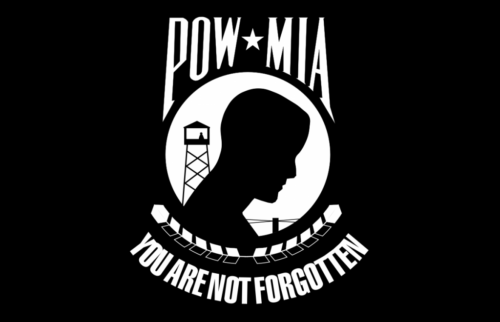
Clay County citizens have always served proudly in our nation’s armed forces. Throughout the modern war era, Clay County – as part of an ever-expanding state – grew in military prominence and in population size. More than sixty names of Clay County military servicemen who died in the line of duty are etched into the granite of the TAPS Military Monument in Green Cove Springs.
Clay County was not only home to its own military installations, airfields and military academy, but was/is also located in very close proximity to major US Navy bases, NAS Jacksonville and NAS Cecil Field for example. This meant thousands of military families resided in Clay County neighborhoods. As a result, every war or military conflict naturally impacted our entire county – our schools, churches, economy and government.
Related Articles
- Florida Military Academy, by Vishi Garig
- Mary Hoff: Creator of the POW/MIA Flag, by Cindy Cheatwood
- General Roy Geiger – A Small Town Boy Makes Good, by Dakota Mahaffey
- Waiting for John MacCain, by Vishi Garig
- Operation Save WWII Dog Tag – The Ledwell Story, by Vishi Garig
- BCC Dedicates Neptune Park – Honors Navy Plane Crash Site, by Annaleasa Winter
In addition to the TAPS Military Monument and Clay County History Museum (both located at the Historic Triangle), there are other local organizations that do an excellent job recognizing the military history of our county, displaying military memorabilia and telling the stories of heroism and sacrifice throughout modern war era conflicts. We encourage you to visit these museums with your family.
The Military Museum of North Florida www.themilitarymuseumofnorthflorida.com
Reynolds Industrial Park, where the museum is located, is the former Naval Air Station, Green Cove Springs, Benjamin Lee Field. The base was the main training base for the F6F Hellcat fighter which had over 5,000 shoot-downs in World War II. Visitors can walk in the shadows of WWII fighter pilots and heroes to include General Roy Geiger, the father of Marine Corps aviation, the Black Sheep Squadron pilots, Joe Kennedy (JFK’s Brother), Ed McMahon (Johnny Carson’s sidekick) and many more. The base was also home to the Navy’s 600-ship Atlantic mothball fleet after the war.
The Military Museum of North Florida honors all service men and women from every branch of the service. There are pictures and displays of uniforms, weapons and equipment from each of our major conflicts. You can see what it must have been like to live on the western front in World War I. The equipment and photos from the Vietnam War show how far warfare had progressed. There are examples of vehicles from the Korean era through Vietnam. The museum has many special events including displays of military art. Events include Military History Day, D-Day Commemoration, recognition of all national holidays and other memorable days in military history.
Camp Blanding Museum and Memorial Park in Clay County, Fla.
5629 S.R. 16 West, 904-682-3196; www.campblanding-musem.org
(Excerpts of article by Denise Maloof, Visit Florida) Looming from forest and S.R.16 asphalt, the Camp Blanding Museum nestles outside the main gate of Camp Blanding, a historic North Florida National Guard installation that remains active and alive, filled with troops and their accoutrements. One of the base’s 1940s-era guest barracks houses the North Florida military history museum, a two-story structure surrounded by massive World War II armament and sobering memorials. Flowery hanging baskets swing from its entry porch, belying the seriousness within, and without.
But enter, admission-free, and re-appreciate freedom. You may be greeted by Joe Schiffer, a Brooklyn, N.Y., native and retired Navy veteran (1951-1979) from the museum’s volunteer corps. He mans the front desk this day, reciting statistics; among them, that Camp Blanding masqueraded as Florida’s fourth largest city during its World War II training height. Camp Blanding’s 1939 establishment as a Florida National Guard training site was carved from Clay County’s piney landscape around Lake Kingsley, a 10,000-year-old sinkhole, per assistant curator Jim Hughes.
Then trek through a trove of artifacts, photographs, weaponry and uniforms. A battlefield Jeep hulks in one display. Newspaper clippings describe German prisoners of war held here, including one ex-POW who journeyed back decades later, for a visit. Most artifacts arrive via private citizens or service people with Camp Blanding ties. Eighty percent of the treasure overflowing upstairs storage came from civilians.



